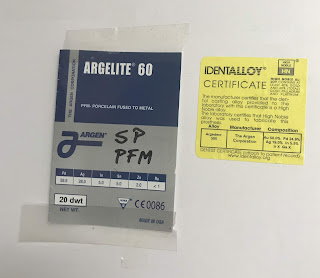The Good, The Bad & The Crossbite
 If your teeth or jaw don’t line up well with each other, you may have crossbite. Dr. Buck, Gwinn dentist explains more about this condition, its effects and what you can do to treat it below.
If your teeth or jaw don’t line up well with each other, you may have crossbite. Dr. Buck, Gwinn dentist explains more about this condition, its effects and what you can do to treat it below.
A Good Bite
In a perfect world, your teeth would all be straight, and your upper jaw would rest nicely on top of and just a little in front of your bottom jaw. Of course, this frequently isn’t the case. Sometimes teeth are crooked or twisted and sometimes your top jaw rests awkwardly on your bottom jaw. How your teeth and jawline up together is called your “bite.”
When we talk about this alignment, the medical term is “occlusion.” If you have a problem with your bite or alignment, it’s called “malocclusion.” Crossbite is a condition of malocclusion.
A Bad Bite
It’s estimated that one in five people have some kind of malocclusion. Under the category of malocclusion, you can have:
- Underbite – when your lower jaw protrudes far out in front of your upper jaw
- Overbite – when your upper jaw protrudes far out in front of your lower jaw
- Crossbite – when your teeth or arches are laterally misaligned (side to side rather than forward and back)
Each of these bite problems can interfere with your oral and overall health. Malocclusion can be caused by:
- A mismatch in size of jaw and teeth
- Sucking a thumb or pacifier too long
- Baby teeth taking too long to fall out
- Early loss of adult teeth
Effects of Crossbite
When your teeth don’t rest down properly on each other, it causes a ripple of many side effects. Effects of a bad bite include:
- Tooth decay
- Gum disease
- Grinding down tooth enamel
- Jaw pain or TMJ
- Asymmetrical smile and facial features
- Chronic headaches and migraines
All of these side effects can get worse over time and seriously threaten your health and daily quality of life. This is why it’s important to treat malocclusion as soon as possible.
Treating a Crossbite
The best time to correct your bite is in youth before the mouth is done growing, but you can and should seek treatment for a crossbite at any age. Treating a crossbite can take a long time because your mouth is a complicated system with many parts. Depending on your specific case and the severity of the crossbite, your Gwinn dentist may recommend:
- Wearing an expander
- Oral surgery
- Orthodontics
Only a professional dentist can diagnose and treat your crossbite. If your bite is bothering you for any reason at all, it’s always a good idea to check with your dentist.
You don’t need to live with pain or a smile you don’t love. To learn more, make an appointment at Northern Trails Dental Care today!
Sources
from Northern Trails Dental Care https://northerntrailsdentalcare.com/blog/good-bad-crossbite/

Comments
Post a Comment